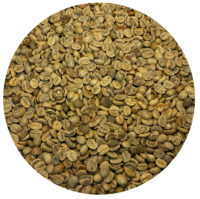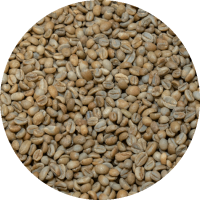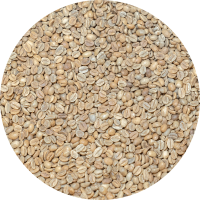Description
Ethiopian natural processed beans are in a class of their own. Exotic tones that you will find in very little other coffee. The kings of the infamous “blueberry” toned coffee. A rare day that tone is achieved but in all nice lots of the natural processed you will find a balance of acidity (lemony floral), stone fruit (red-fruit), and usually a chocolaty semi-tea like dark tone. Depending on the region and exact processing, some can be more fruity or acidic than others, more chocolaty or more herbal.
This is a great example of a very well balanced and pronounced Ethiopian. Grade. 3 is nothing to back away from. In the natural processed world these can be top cupping lots (this one scored nicely). The grades refer much to the appearance of the coffee and uniformity rather then the tastes. Grade 3’s tend to include some of the more wild trees and undocumented strains which make Ethiopian coffee so tasty.
Tasting Notes: A nice fruit forward and chocolaty cup of coffee. Wonderful aromatics that will follow through into the cup profile. A little lower acidity and fuller bodied than many other Ethiopians, retains a little hint of acidity at the light to medium roast point, nice red fruit tones upfront with a little floral note, not over the top but very noticeable. Turns much more chocolaty as you get close to 2nd crack, a nice fruity jazzy spice note to accompany it.
Roasting Notes: A great medium to borderline dark roast. This coffee is a very nice screen for a gr. 3 and decently easier to roast than average. A bit higher chaff but will roast pretty even. A nice city + roast will do it for most Ethiopian fans, accentuating the floral and fruit tones. Darker roasts are tasty and much more robust but will burn out the more fruit forward cup tones.
These beans are coming from the Guji Coffee Export PLC, which is owned and operated by Girma Edema who has more than 20 years of experience exporting coffee from the Kercha district within the Guji zone. Coffee producers deliver their ripe cherries to Girma’s washing station where the cherries are sorted an immediately placed on raised beds and dried over a period of 15 to 20 days. The raised drying beds are carefully constructed to ensure proper air circulation and temperature control for an optimal drying process. Cherries are also turned regularly on the beds to prevent damage during the drying process. The cherries are stored in a local warehouse after the moisture is reduced to less than 12 percent.






Kat –
Blueberry!!! Smelled like blueberry muffins baking while roasting. Slow roasted to just past first crack. We loved it. When are you going to get more in stock?